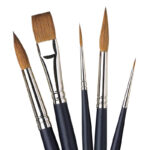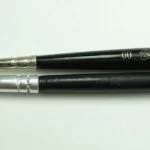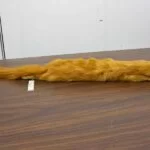Miniature paintbrushes’ introduction | most essential tips
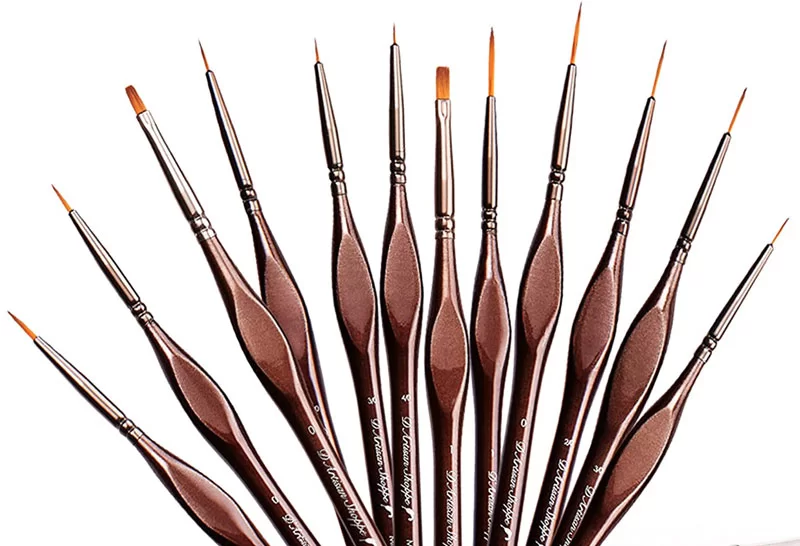

The paintbrush is the most important tool for painting miniatures.
However, owning a paintbrush does not guarantee that you will get the best results. You need to know how their bristles, ferrule, crimp and handle work and how to care for them so that they last. This guide highlights some essential tips for brush care so you get the best results from your paintbrush.
What brushes do you need to start painting miniatures?
When it comes to painting your miniatures, there are quite a few brushes you will need. The most common ones include:
- Pointed round brush: These brushes have a wide belly and hold paint well. The brushes also have a pointed tip, making it possible to paint small details, which makes them work well for layering and all detail work.
- Round brushes: They have a similar form to the pointed round brush but have a less pointy tip. Their most significant perk is that they work great for base coating, layering, and all large detail work.
- Flat brush: They have a flat belly and hold paint well. Then again, unlike the pointed round brush and round brush, they are best suited for dry brushing.
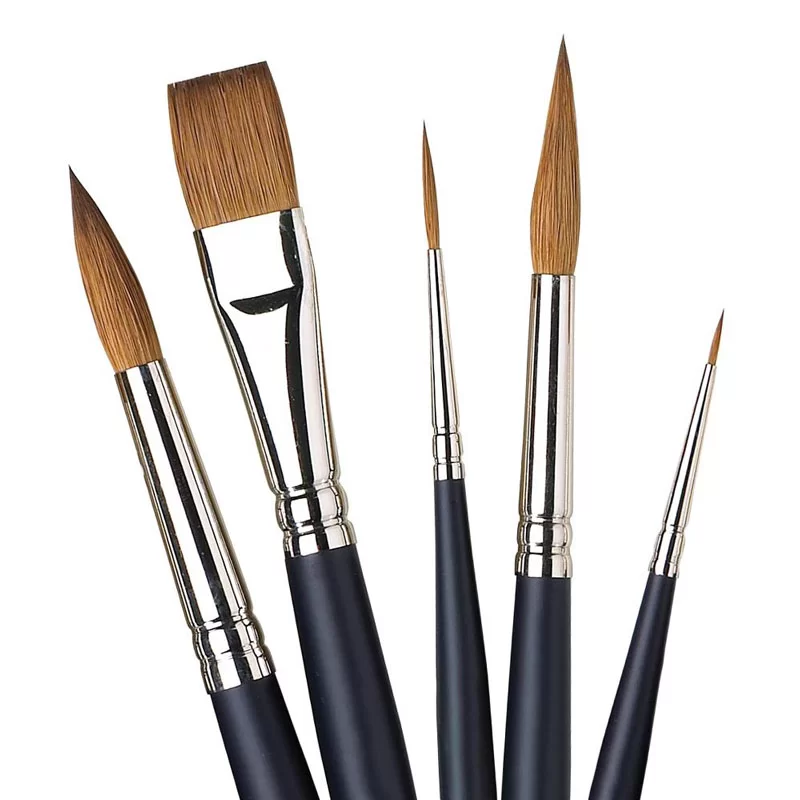

Miniature brush sizes
Miniature paint brush comes in various sizes ranging from 0 to 50, and more.
However, most paint brands won’t label the brushes by their size. What they do is label the brush by its use so that everyone knows at first glance their usefulness. Consider the Citadel style of labeling miniature brushes, for example. They typically have a shading brush, base brush, and even medium-layer brush. For this reason, you need to know more about miniature paintbrush size.
On a related note, our article on “Brush Sizes for Miniature Painting” covers everything you need to know about miniature paint brush size.
Moving forward, the most important brush size every painter can’t do without is the size 2 brush. This is a good all-around brush size. It helps with layering and detail work, especially if you have a pointed round-shaped brush.
I wouldn’t recommend mini painters using any other brush larger than a size 2 for their figures except if you have to paint larger vehicles. A size 1 brush is a good mid-range miniature brush perfect for highlighting, edge work, and details.
On the other hand, a size 0 brush is smaller than a size 1 and 2 brush and is great for things like eyes, pupils, teeth, and other very fine detail work. There are also smaller brushes of sizes 00, 000, and more. The only downside of these brush sizes is that they are very situational and not top-priority sizes painters should have.
The right miniature paintbrush for the right job often is a size 2, 1, or 0 brush.
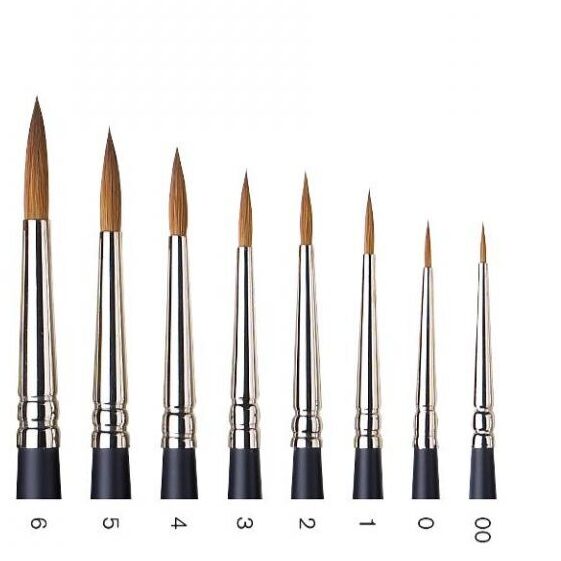

What type of brush is best for miniature painting
Like the brush size, paint brushes differ by the material they are made from. The most common brushes used by mini painters are often synthetic and kolinsky brushes. Still, you will find more than this if you actually consider your options based on cost.
- Synthetic brushes
These brushes have synthetic bristles and are quite cheap. They often replicate the feel of natural bristles and are easier to maintain. But, they often feel stiff compared to a kolinsky brush.
- Kolinsky sable
A kolinsky sable brush is a soft, flexible, and natural brush with its hair gotten from the tail of a Siberian weasel. A kolinsky brush allows you to get finer details on your miniature and is easy to clean.
The only drawback to these brushes is that they are more expensive than synthetic ones due to their natural hair.
- Mixed brushes
Mixed bristles brushes are often a mixture of hairs. For instance, they may mix synthetic hair and Kolinsky sable hair. Mixed brushes can hold a lot of water, and their bristles often feel more like natural bristles.
- Squirrel brushes
Squirrel hair brushes are very thin, fine, and natural bristles. They also hold water well and lift pigment easily. The difference between a squirrel and Kolinsky sable brushes is that Kolinsky brushes come to a point and retain their shape. Squirrel brushes are soft and squishy and won’t retain their shape easily. Furthermore, they don’t work well for detailed work. You can use them to wet your paint or put in initial washes.
- Camel brushes
While they are named camel brushes, they don’t actually have their origin in camel hair. They only have the camel color. Instead, they act mixture of ox, goat, squirrel, or pony hair.
What are the best brands for miniature painting brushes?
Whether you are an entry-level miniature painter or an advanced painter, getting a paintbrush for your painting project won’t be an issue because you will find several brands to choose from. The most notable ones include:
- Da Vinci
- Windsor and newton are the biggest paintbrush brands every painter loves. They make the best kolinsky sable brushes.
- Citadel from Games Workshop makes fantastic brushes like the shade brush for glazing paints.
- Army painters are pretty equivalent to the Citadel line, if not better.
- Rosemary and co.
- Scharff makes Kolinsky Sable brushes from size 8 downwards while offering competitive prices.
- Raphael makes some good kolinsky brushes.
- Artis Opus is a new manufacturer but makes some quality paint brushes available in a set.
- Lowell Cornell and Princeton Arts have some decent mid-range brushes.
How to keep paintbrushes pointed
Never store your paint brushes with the bristles tipped down. Else, they will bend. A good alternative is to keep them tipped up in a cup, tin, or pencil holder.
Another technique that helps you keep the pointed tip of your brushes is to use saliva. Most people don’t like this idea because it may mean feeding on toxic solvents in the paint. Still, an added advantage of this trick is that it ensures you actually get all the excesses out.
Just put the paintbrush in your mouth, under your tongue, and pull it out slowly between your lips while twisting in one direction. Clockwise or anti-clockwise doesn’t matter. This will bring the brush to a point.
Better still, use a brush soap, running the bristles over your palm and twirling the tip to a pointed shape.
We have an article on How to Keep Paint Brush Pointed. So, if you need to know more about keeping the brushes pointed, you can learn more from it.
How to clean miniature paintbrushes
One of the biggest mistakes most miniature painters make is storing their miniatures without removing paint excesses from the brush. Letting paint dry in the brush after a paint job means you damage the bristles and ferrule, which leaves you with messy bristles and damaged tips.
To save your paintbrushes from damage, you need to know how to clean them after a painting project. Here’s how.
How to clean acrylics off of your miniature paintbrush
What to use
- Water
- Brush soap or cleaner
- Towel
- Water pot
The process
- Pour lukewarm water into a small bowl
- Dip the paintbrush in it and swirl to remove the paint
- Remove the brush and rub them over a brush soap
- Try a cleaning motion with the bristles over the towel, so it forms a pointy tip
How to clean enamel off of a paintbrush
What to use
- Turpentine
- Paper towel or soft cloth
- Water
The process
- Pour some turpentine into a small pot
- Submerge the brush tip up to the ferrule in the solvent to melt dried paint in the brush
- Depending on how much dried paint you need to remove, leave the brush in turpentine for some minutes to soak, but not for a long time, so it does not damage the crimp and ferrules.
- Shake off excess turpentine on the side of the container
- Use a paper towel or soft clothes to wipe the brush and absorb the excess cleaner
- Repeat the steps above if the paint does not come off completely
- Then, rinse off any leftover solvent in cool or lukewarm water
How to clean your brush off lacquer paint
Lacquer does not require excessive cleaning because they come off easily. With lacquer paint, here’s all you need to do:
What to use
- Acetone or lacquer thinner
- Bowl
- Soft towel
The Process
- Pour a small amount of lacquer thinner into a small pot
- Give the brush a swish in the thinner until the color comes off
- Shake it out or use a paper towel to dry
How to clean primer off brushes
What to use
- Water or turpentine
- Soft towel
- Pot
The process
- If you use oil-based primers, pour some turpentine into a pot. Water-based primers pour some amount of lukewarm water into a pot.
- Leave the brush in water or turpentine to soak.
- Then, Rub the brush back and forth over a towel to remove excess paint, ensuring the mineral spirits or water is well worked into the bristles so that the paint removes easily.
- Be sure to do both sides and leave the brush to dry.
How to store miniature paintbrushes
Technically, the right way to store brushes to avoid damage is with the bristles facing up. But, it’s not enough to stand them. You should also get a storage compartment for them, like a cup and paint holder. This way, the bristles won’t rest against any surface. Storing the brushes in a container also saves you from searching your collection to find a suitable one.
I also won’t leave my bristles in water for more than 5 minutes because it can make them look frayed and split. If you leave a brush in paint water with the bristles down, you are going to ruin the brush. Trust me, don’t do this.
How to restore miniature paintbrushes
When your paintbrush is damaged, it could be because of leftover pigments that have dried up in the ferrule. On the other hand, it could be because the brush has lost its shape or pointed tip.
If your paintbrush has either of these issues, here’s how to restore them to new again.
For dry paint, all you need to do is soak the brush in hot distilled white vinegar or acetone for 20 to 30 minutes to break apart dried paint in the bristles and make the brush soft again to regain its shape.
When the brush becomes soft, get a comb to comb it out, then rinse the vinegar with water.
Then, massage a pea-sized amount of hair conditioner or brush soap on the bristles, giving them a supple texture. Then, wrap the brush in a plastic bag for 1 hour so that the bristles absorb the soap or conditioner well. You do not have to rinse the conditioner out of the brush.
If you have a ruined brush shape or pointed tip, all you need to do is run a brush over a brush soap, then gently use your fingers to massage the bristles until the brush tip forms a sharp point. Once it has a nice pointed shape, place it uprightly in a container and allow it to dry hard.
you should use a brush restorer
A brush restorer is the easiest to restore the damaged pointed edge and overall shape of your brush.
I use Masters Brush Cleaner. An advantage of this brush restorer is its wide availability. Painters can find it online at Amazon or most local art and craft stores.
A brush restorer is easy to use and cleans off residues on the brushes. It also serves to condition the miniature paint brushes as well.
Don’t use cheap brushes
Cheap brushes can be frustrating, so you don’t want to use them, especially for large armies or a major painting project.
When you are learning to paint your tabletop mini gaming figures or Warhammer models, you can start with a cheap brush. They are only useful for learning how to paint.
as you start controlling your technique you will find out that a cheap brush limits your skills.
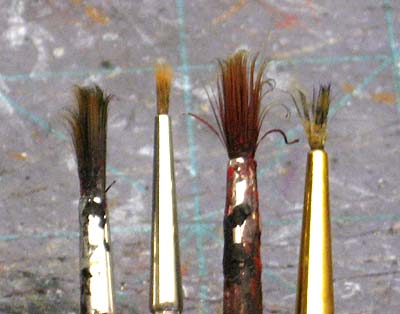

Top tips for using miniature paintbrushes
- Don’t get paint in the ferrule, the metal part of the brush that holds the bristles together. If you do so, the bristles will split and no longer hold a point.
- Routinely clean your brushes so the paint does not dry in the bristles and damage the brush.
- Always have scrap brushes handy so you don’t have to do a task like mixing paint that may damage the pointy tips of your brush.
- Avoid putting the brush into a paint pot as you may accidentally get paint in the ferrule
- Store the brushes safely with the bristles up in a container or coffee mug. Alternatively, leave them on your work table lying on a towel.
- Don’t leave a brush in paint water with the bristles down for extended periods. You will end up with frayed bristles.
- Routinely change your paint water. This way, the paint pigment does not build in the brush when the water gets murky and promotes brush split.
- Don’t use hot water to clean the brushes as hot water damages the may the brush
- Make sure to reshape the brush tips after cleaning to help them retain their pointed tip
Miniature painting brush prices
Want to get a paintbrush? Their prices differ- some being pretty expensive and others quite affordable. Consider the following:
| Brand | Price |
| Winsor & Newton Series 7 size 000 to 7 | $18.67 to $250.99 |
| da Vinci Watercolor Series 10 Maestro size 1 | $20.45 |
| Artis Opus Series S O Brushes Size 000 To 6 | $10.99 to $27.99 |
| Raphael size 00000 to 2 | $20 to $59 |
| Rosemary & Co size 10/0 to 20 | $5. 73 to 311.78 |
| The Army painter brushes | $4.99 to $20 |
Conclusion
Whether you are a beginner or a seasoned mini painter, having good miniature paintbrushes makes a lot of difference. But, you won’t know this if you don’t know about your miniature brushes. Hopefully, this guide is clear enough to explain everything you need to know about your paintbrush.

